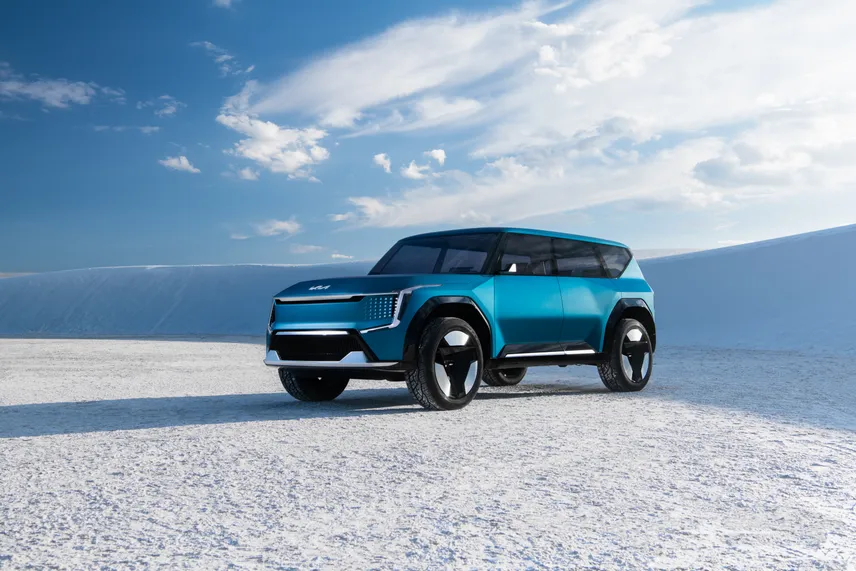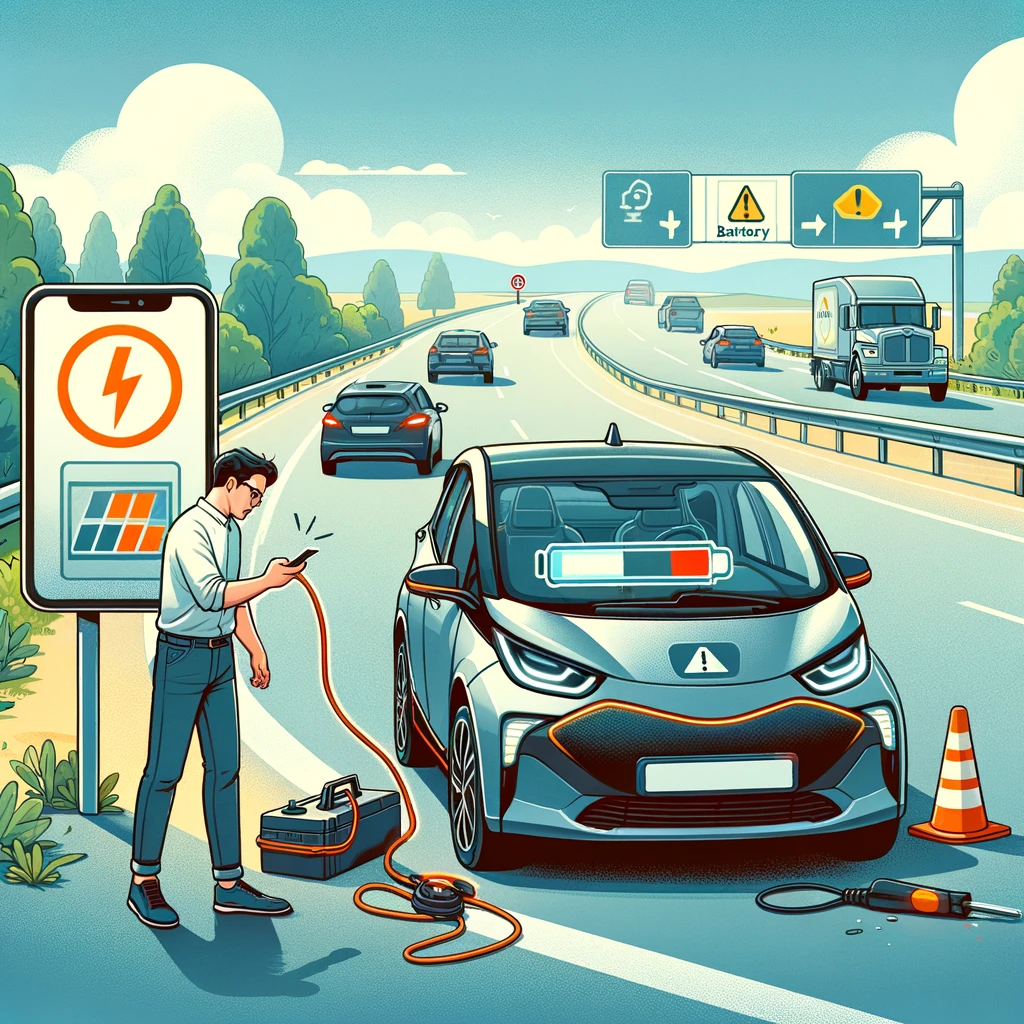Electric vehicles (EVs), also known as battery electric vehicles (BEVs), operate by converting stored electrical energy into mechanical power. You can also take a look at our article titled What is Electric Vehicle in Simple Words? where we explain what electric vehicles are and History of Electric Vehicles where we talk about the history of electric vehicles. This energy, drawn from the grid through charging stations, is stored in lithium-ion battery packs located within the vehicle. The primary component, the electric motor, utilizes this power to rotate the wheels, facilitating motion without the need for internal combustion engines found in traditional vehicles.

EVs feature fewer moving parts and require less maintenance compared to gas-powered cars. Charging can be done at home or public stations, with varying levels of speed, from slow Level 1 chargers to rapid Level 3 stations. The EV’s onboard charger converts AC electricity to DC for battery charging, while a power electronics controller manages energy flow. Additionally, the design of the electric motor involves electromagnets creating rotational force, propelling the vehicle. EVs offer smooth handling and swift acceleration, with the added benefits of environmental friendliness and potential cost savings over time.
In addition, you can take a look at the video about Electric Vehicle Motor for you.
How the Electric Vehicle Motor Works?
Electric vehicle (EV) motors transform electrical energy into mechanical motion, propelling the car forward. When the accelerator is pressed, electricity from the battery activates the motor. The motor comprises a stator and a rotor; the stator consists of a core, conducting wire, and frame, forming electromagnets when energized. This creates a magnetic field that turns the rotor, connected to the car’s gears and wheels.

EV motors typically use a three-phase, four-pole induction system, where three sets of wires in the stator generate a rotating magnetic field. This field induces current in the rotor, converting electrical energy to mechanical energy, which turns the wheels. Unlike traditional cars with engines and alternators, EVs use the motor for both propulsion and recharging the battery during deceleration, employing alternating current for efficient energy transfer and motor functionality. The design of EV motors is key to their efficiency, contributing to the growing performance and environmental benefits of electric cars.
What are Electric Vehicle Motor Types?
Electric vehicles (EVs) utilize a variety of motors, each with distinct characteristics and advantages. The DC Series Motor, known for its high torque and efficient electricity consumption, is advantageous for its speed control and torque output adjustment. However, it requires significant maintenance due to brushes and commutators. Brushless DC Motors, on the other hand, offer a maintenance-free solution with fewer parts and higher energy savings. They are preferred for their reliability, long lifespan, and quieter operation.
Permanent Magnet Synchronous Motors (PMSMs) excel in power density and efficiency, making them ideal for high-performance applications despite their higher cost. Three Phase AC Induction Motors are recognized for their high torque control and energy efficiency, but they have limited speed variation capabilities and are more expensive. Lastly, Switched Reluctance Motors (SRMs) stand out for their powerful torque control and cost-effectiveness, with a simple construction that enables precise control of torque and speed. Each motor type offers unique benefits, making them suitable for different applications in electric vehicles.
What Happens If Your Electric Car Runs Out of Battery?
Electric vehicles (EVs), known for their efficiency and environmental benefits, face a unique challenge when their battery depletes. Unlike gas vehicles, EVs can’t simply refuel at any station; they require specific charging points, which can take hours to replenish the battery. When an EV’s battery runs low, the vehicle will eventually stop moving, typically preceded by warning indicators to allow the driver time to find a charging station or a safe place to stop. In such situations, drivers may need roadside assistance or a tow to the nearest charging station.

It’s essential for EV drivers to plan their journeys, keeping in mind their vehicle’s range and locating charging stations en route, possibly using GPS or smartphone apps. Many EVs have built-in systems to guide users to nearby charging stations and provide battery status. To avoid battery drain, drivers should monitor their battery levels, minimize energy consumption, and utilize features like regenerative braking. In emergencies, portable battery chargers can provide a temporary solution. Understanding and preparing for these scenarios ensures a seamless EV driving experience.
Do Electric Cars Lose Charge When Parked?
Electric vehicles (EVs) do experience battery drain when parked, but it is typically minimal. The drain occurs because even when off, the EV’s battery continues to power some electrical systems. On average, an EV might lose a few percent of its charge per month when idle. To manage this, EVs often have features like “Deep Sleep” or “Power Save” modes that minimize energy consumption during prolonged parking by shutting off non-essential systems.
It’s recommended to store EVs with a battery charge between 50% to 80%, as fully charging can damage the battery over long periods. To extend battery life, parking in cool, shady areas and avoiding extreme temperatures is beneficial. For short-term parking, keeping the charge between 30-70% is advised. Importantly, unnecessary features like Wi-Fi or GPS updates should be deactivated, and energy-saving modes should be enabled to prevent excess drain. Generally, a well-maintained EV can sit for weeks without charging, provided these guidelines are followed.
Do Electric Cars Lose Range Over Time?
Electric cars experience a gradual decrease in battery capacity and range over time, similar to other lithium-ion battery-powered devices. Annually, the range of electric cars reduces by about 2.3% on average. For instance, a car with an initial range of 150 miles may lose approximately 17 miles over five years. This degradation rate, however, can vary based on the vehicle’s make, model, and production year. Government regulations require EV manufacturers to warranty batteries for 8 to 10 years, or 100,000 to 150,000 miles. Advancements in technology have led to more efficient batteries with slower degradation rates and the ability to maintain a longer range despite aging. Additionally, larger batteries with increased energy potential are being produced at lower costs, further mitigating range loss over time. While the entire battery seldom needs replacement, individual cells can be replaced as they degrade, reducing overall maintenance costs. The extent of battery degradation and range loss is influenced by factors such as charging habits, temperature, and the use of fast charging facilities. Overall, EV batteries are expected to last beyond the practical lifespan of the vehicle, with minimal impact on daily commuting needs.










